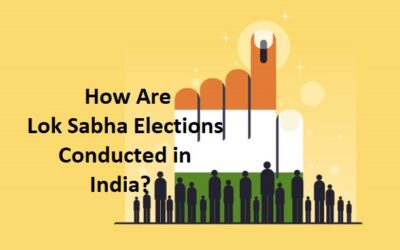All Expected Questions With Answers From Class X Manufacturing Industries: Term II
All Expected Questions With Answers From Class X Manufacturing Industries: Term II is here. Class X Manufacturing Industries is an important chapter of term II for all students. There are two chapters included in the portion from Geography. One is Manufacturing Industries and the other is Lifelines of National Economy. Both the chapters are important. However, mapwork will also come from Mineral and energy resources. Here, all expected Questions with Answers from Class X Manufacturing Industries is given for your Term II preparation. Many different types of questions can be prepared from Manufacturing Industries in class X. Therefore, here we have tried to include all possible questions from class X Manufacturing Industries. For LIFELINES OF NATIONAL ECONOMY, click here.
One Mark Multiple Choice Questions:
Of course, MCQ’s will not be asked from class X Manufacturing Industries. But, two questions can be mixed and 2 mark questions can be prepared. Therefore, I recommend do not neglect these MCQ’s. It is going to be very helpful for your Term II Board exam preparation.
Q1 What was the main philosophy behind Public Sector Industries?
A. To increase GDP mainly from 17 to 27%
B. Bringing down regional disparities
C. Making huge profits finally.
D. To export and bring much needed foreign exchange.
Q2 Which of the following is a private sector industry?
A. TISCO
B. SAIL
C. NTPC
D. BHEL
Q3. When was the National Jute Policy formulated?
A. 2001
B. 2003
C. 2005
D. 2007
Q4. Where was the first Jute mill set up?
A. Bolpur
D. Jamshedpur
C. Jadavpur
D. Risra
Q5. Bailadila Iron ore mines are located in
A. Karnataka
B. Chhattisgarh
C. Jharkhand
D. Tamilnadu
Q6. Which one of the following do not come under consumer industries?
A. Sugar
B. Copper smelting
C. Sewing machines
D. Toothpaste
Q7. Which of the following is a mineral based industry?
A. Jute industry
B. Coffee industry
C. Textile industry
D. Petrochemicals industry
Q8. Which organization is responsible for the marketing of steel of the public sector undertaking?
A. IISCO
B. BHEL
C. SAIL
D.TISCO
Q9. Which is the only industry in India which is self-reliant?
A. Iron and steel
B. Automobile
C. Textile
D. Electronics
Q10. Which of the following do not come under electronic industries?
A. Locomotives
B. Radars
C. Cellular phones
D. Telephones
All Expected Questions With Answers From Class X Manufacturing Industries: Term II
MCQ’s FROM CLASS X MANUFACTURING INDUSTRIES
Q11. Identify the industry which is not responsible for water pollution?
A. Paper Pulp
B. Sugar
C. Textile and dying
D. Leather industry (Tanneries)
Q12. The first successful textile mill was set up in _________?
A. Ahmedabad in 1854
B. Surat in 1854
C. Kolkata in 1854
D. Mumbai in 1854
Q13. Ginning, Spinning, Designing and Weaving are associated with_____________?
A. Jute industry
B. Sugar industry
C. Leather industry
D. Cotton Textile industry
Q14. The first Iron and steel industry was set up in______________
A. Bhilai
B. Durgapur
C. Jamshedpur
D. Salem
Q15. The first cement plant was set up in
A. Chennai in 1904
B. Katni in 1904
C. Rourkela in 1904
D. Sindri in 1904
Q16. What happened to jute production after Independence?
A. There was record production.
B. Major jute producing area went to Bangladesh.
C. Government took major steps to promote jute.
D. Jute mills were closed.
ANSWERS Of MCQ’s
- B. Bringing down regional disparities 2. A. TISCO 3. C. 2005 4. D. Risra 5. B. Chhattisgarh 6. B. Copper smelting 7. D. Petrochemicals industry 8. C. SAIL 9. C. Textile 10. A. Locomotives 11. B. Sugar 12. D. Mumbai in 1854 13. D. Cotton Textile industry 14. C. Jamshedpur 15. A. Chennai in 1904 16. B. Major jute producing area went to Bangladesh.
All Expected Questions With Answers From Class X Manufacturing Industries: Term II
SHORT ANSWER TYPE QUESTIONS: 2 Marks
Q1. Define manufacturing?
ANS) The process of converting raw materials largely into more valuable product is called manufacturing.
Q2. What are agglomeration economies?
ANS) To take the advantage offered by urban centers, when many industries come and grow together is called agglomeration economies.
Q3. How manufacturing help in earning foreign exchange?
ANS) Export of manufactured goods expands trade and commerce and finally brings much needed foreign exchange.
Q4. What are consumer industries?
ANS) Industries that produce goods that are directly used by consumers are called consumer industries e.g. paper, sugar etc.
Q5. What are the two prime factors for the location of Aluminium industry?
ANS) i) Firstly, Regular power supply and
ii) Secondly, Assured source of raw material at minimum cost.
CLASS X MANUFACTURING INDUSTRIES
Q6. What do you mean by a small scale industry?
ANS) An industry where the investment is less than 1 crore is called a small scale industry.
Q7. What was the objective of National Jute Policy formulated in 2005?
ANS) The major objective National Jute Policy formulated in 2005 was
i)Firstly, to increase production and improve quality.
ii) Secondly, ensuring good prices to jute farmers and increasing yield per hectare.
Q8. What do you mean by aluminum smelting?
ANS) Aluminum smelting is the process of extracting aluminum from its oxide, alumina.
Q9. Mention two factors that has given boost to the industry?
ANS) i) The factors that has given boost to the industries are Liberalization, Foreign Direct Investment and Privatization.
Q10. What does Thermal Pollution mean?
ANS) Rise in the temperature of rivers or lakes that is injurious to water-dwelling life and is caused by the disposal of heated industrial waste water or the use of water as coolant from power plants is known as Thermal pollution.
Q11. How is iron ore transported from Kudremukh mines to Mangalore port?
ANS) iron ore is transported as slurry through pipelines from Kudremukh mines to Mangalore port.
Q12. Which mineral is used in hardening steel during manufacturing?
ANS) Manganese.
All Expected Questions With Answers: Term II
Q1. Manufacturing sector is considered as the backbone of economic development of a country? Give three reasons.
ANS) Manufacturing sector is considered as the backbone of economic development of a country because of the following reasons:
a. It reduces the heavy dependence of people on agricultural income by providing them jobs in secondary and tertiary sectors.
b. It removes regional differences by establishing industries in tribal and backward areas.
c. Export of goods expands trade and commerce, and bring foreign exchange for the country.
Two more points may be added if this question is of 5 marks
d. Manufacturing industries help in making agriculture modern, which forms the backbone of our economy.
e. Industry sector contributes 27 % of GDP out of it manufacturing accounts for 17 %.
Q2.”Industrialization and urbanization go hand in hand.” Validate the statement.
ANS) A small town becomes a modern and big city as soon as an industrial activity starts. People start moving from rural areas to towns in search of jobs. This further, leads to the development of transportation, housing, schools, hospitals, market, banking and many other services.
The given statement is justified because:
(i) Industrialization causes growth in available factory jobs. Thus, due to easy job opportunities, it pulls people from various places that leads to urbanization.
(ii) Housing and transport facilities develop to accommodate these people which leads to infrastructural development.
(iii) Cities provide markets and also provide services such as banking, insurance, transport, labour, consultants and financial advice, etc to the industry.
Thus, it can be concluded that industrialization and urbanization go hand in hand.
Q3. Analyze the role of manufacturing sector in the economic development of India.
ANS) The role of manufacturing sector in the economic development of India are:
(i) Manufacturing industries help in modernizing agriculture which forms the backbone of our economy.
(ii) It reduces the heavy dependence of people on agriculture sector and creates jobs in secondary and tertiary sectors.
(iii) Plays a vital role in the eradication of unemployment and poverty.
Two more points may be added if this question is of 5 marks
(iv) Fourthly, It brings down regional, caste, and religious differences.
(v) Finally, Export of manufactured goods expands trade and commerce and enhances prosperity by bringing much needed foreign exchange.
Q4. “Agriculture and industry are contemporary to each other” Justify the statement.
ANS) The interdependence of Agriculture and industry helps the development of both the sectors.
However, The most important aspect of this inter dependence is that the products of one serve as important inputs for the other.
Moreover, Growth of one sector, thus means ample supply of inputs for the other.
Interdependence of agriculture and industry:
(i) Agro-industries in India have given a major boost to Agriculture II by raising its productivity.
(ii) Industries depend on agriculture for their raw materials.
(iii) Industries sell their products such as irrigation pumps, fertilisers, etc., to the farmers.
(iv) Industries have made the production processes of agriculture very efficient.
Q5. “Though India is an important iron and steel producing country in the world, yet we are not able to perform to our full potential.” Why?
ANS) Though India is an important iron and steel producing country in the world, yet we are not able to perform to our full potential because
i) High costs and limited availability of coking coal.
ii) Irregularity in the supply of power (coal)
iii) Low productivity of labour and poor infrastructure.
Q 6. “The Textile industry is the only industry in India which is self reliant and complete in it’s value chain.” Justify the statement.
ANS) The Textile industry is the only industry in India which is self reliant and complete in the value chain because of following reasons:
i) Firstly, contributes significantly (14%) to industrial production.
ii) Secondly, 35 million persons are directly employed which is second largest after agriculture.
iii) Thirdly, with 24.6% of foreign exchange it contributes 4% towards GDP.
Q7. Mention any three challenges faced by jute industry.
ANS) Three challenges faced by jute industry are:
i) After partition, three-fourth of the jute producing area went to Bangladesh.
ii) stiff competition from synthetic industries.
iii) Demand of jute decreased, hence lost it’s market.
Q8. Why are Jute industries concentrated along the Hoogly river?
ANS) Jute industries are concentrated along the Hoogly river because
i) Jute is mainly grown in West-Bengal.
ii) Moreover, the processing of jute requires lot of water.
iii) Inexpensive water transport for export.
Q9. “Sugar industries are shifting to south India” Give three reasons.
ANS) Sugar industries are shifting towards south because:
i) Firstly, Sugarcane is a tropical crop therefore have higher sucrose content.
iii) Secondly, Cooler climate ensures a long crushing season and
iv) Finally, The cooperatives are more successful in southern states.
Q10. Why are sugar-mills concentrated in sugarcane producing areas? Explain any three problems faced by sugar industries.
ANS) Sugar-mills are concentrated in sugarcane producing areas because:
i) Sugarcane is perishable (JALDI KHARAAB HONE WALI CHEEZ) good and looses sucrose content if delays in transportation.
ii) Moreover, sugarcane is heavy and bulky, therefore transportation cost reduces.
iii) People those who grow sugarcane, they only manage industry.
Three problems faced by sugar industries are:
a) seasonal nature of the industry.
b) Old and outdated method of production




0 Comments